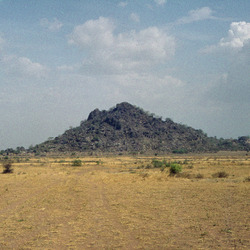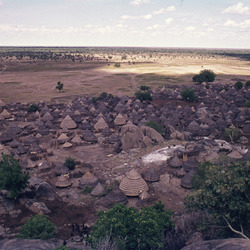Epilogue 14
The Pari have never been isolated from the outside world. In their myths they moved to Lafon hill from a place further north they call Wipari, where they split from other Luo people. They arrived at Lafon Hill a few generations ago, first the Pugeri settled at the east of the hill in the seventeenth century (counting by the age sets), then the Boi arrived and settled in Bura and Wiatwo. The last group was the Kor.
The Pari also have stories about slave traders who, with the help of firearms, kidnapped people from Lafon. In a cave on the hill they have a few rifles hidden. These weapons are kept for protection only and have never been used for hunting or any other purposes.
Only a few families at Lafon were blacksmiths. The closest neighboring people, 20 km south of the hill at the Lapit range, included groups of blacksmiths and pottery makers. Small stock and grain were traded for hoes, spears, knives and clay pots for cooking and storing food.
A few years before the outbreak of the first civil war between South and North Sudan in 1955, a Catholic mission placed a station on the southern tip of the hill. When the war started, they left.
When the plains were sufficiently dry, age groups were ordered to clear
a road to Lapit.
During the peace from
1972 to 1985, traders came with lorries to Lafon to exchange sorghum for
different industrial goods. A permanent open road to Lapit and Torit was
high on the list of what the Pari wanted. With the help from Norwegian
Church Aid, the road opened in early 1980.
“Lafon, about 36 miles north of Torit town, was badly affected (by hunger) too. Many families left their houses and moved with their cattle and goats to where they could sell and exchange the animals for food. As a result a he-goat or bull which usually sells for / Sudan pounds or 40, fetched only 2 or 10. Lafon had produced plenty of durra, but it had been bought earlier by traders at very low prices.” (Sudan Now, September 1982:15)
The second war started in 1985. Groups within the SPLA (Sudanese People's Liberation Army) eventually found Lafon as a perfect base. The only road was easy to control. The people produced lots of food, and no traders came, so the soldiers had a good time. The excellent organized age groups worked very well as military regiments for different military units.
One morning in January 1992 a fight between units started, which caused a fire that finished all of the villages.
In January 2006 I visited the UNHCR refugee camp in Kakuma, Kenya. Here I met again people I had been hunting together with and many more who had run from the war and Lafon.
Lafon Hill has been abandoned ever since. A new village on the plains south of the hill, with an airstrip, is called Lafon.

